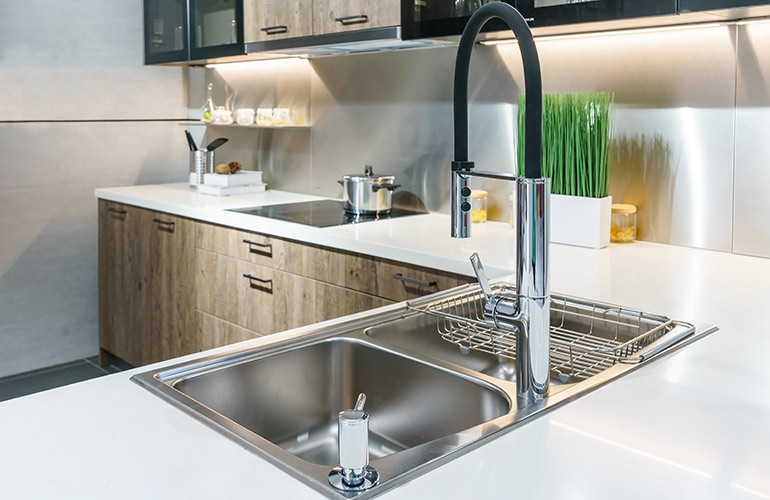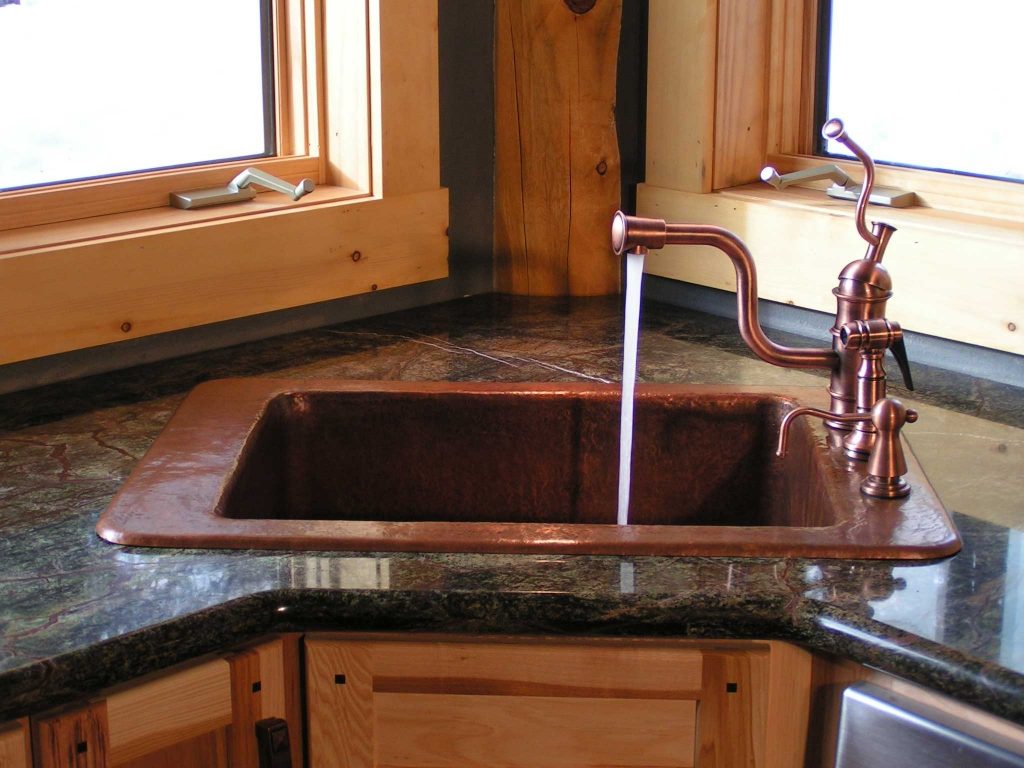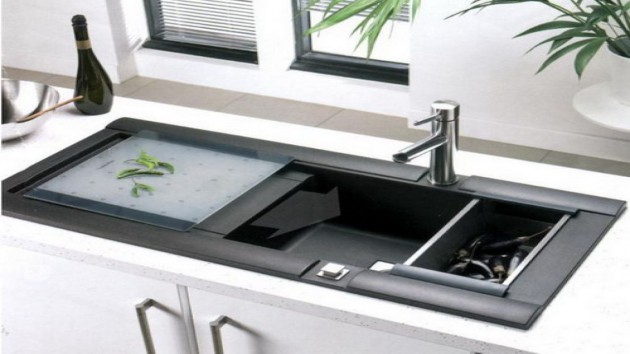Kitchen sink renovation is a key aspect of kitchen remodeling that can transform the look, feel, and functionality of your cooking space. The sink is often the central focus in a kitchen, whether it’s for washing dishes, prepping food, or simply as a visual feature. Renovating it can involve replacing outdated or damaged sinks, changing out faucets, or upgrading the countertops and plumbing surrounding it. Regardless of whether you’re going for a simple facelift or a full-on remodel, there are various aspects to consider to ensure that your kitchen sink renovation meets your practical needs and aesthetic desires. Let’s dive into the process of planning and executing a kitchen sink renovation while keeping in mind the materials, style choices, and technical requirements that come into play.
When choosing a new kitchen sink, the material plays a critical role in both the durability and appearance of your space. Stainless steel sinks are highly popular due to their affordability, resistance to stains, and modern look. They are practical in busy kitchens, but they can show water spots and scratches over time. For a more traditional or farmhouse feel, cast iron sinks coated with enamel provide a stunning, heavy-duty option that is resistant to wear. However, they may chip if heavy items are dropped into them. Composite granite sinks, while more expensive, are extremely durable and resistant to heat, scratches, and stains, offering a sleek, natural look. The choice of material ultimately depends on your budget and the level of maintenance you’re willing to undertake.

The size of the sink is another crucial factor. Larger, deep sinks are becoming more popular, especially with families or avid home cooks who need ample space for dishes and food prep. Single-basin sinks can accommodate large pans but make multitasking difficult. On the other hand, double-basin sinks allow for more flexibility, with one basin for washing and the other for rinsing or drying. Undermount sinks are sleek and easy to clean since there’s no lip where debris can gather, but they require solid surface countertops such as granite or quartz to be properly installed. Drop-in sinks are easier to install and can be used with any countertop material, but they can look bulkier and may be harder to clean around the edges.
Faucets are another key element of a sink renovation that can greatly impact both functionality and style. Pull-down or pull-out spray faucets offer flexibility for washing dishes and cleaning the sink. You can also choose between single-handle faucets, which offer a more streamlined look, or two-handle faucets, which provide more control over water temperature. Features like touchless activation or built-in water filtration systems are becoming increasingly popular in modern kitchens, offering added convenience and helping to minimize water waste.

Plumbing upgrades are often required during a kitchen sink renovation, especially if you’re relocating the sink or upgrading to a more modern system. This can involve adjusting the water lines, replacing the garbage disposal, or even updating the piping to avoid leaks or clogs. While this can add to the cost of the renovation, it ensures that your new sink functions properly and is up to code. Hiring a licensed plumber is usually a good idea, as they can handle the technical aspects of the installation and avoid any costly mistakes down the line.
Countertop integration is another critical component when renovating your kitchen sink. Depending on the material of the countertop, certain sink types may not be compatible. For instance, undermount sinks require solid surface countertops, such as quartz or granite, to provide the necessary support. Laminate countertops are not ideal for undermount sinks, as the moisture can damage the material over time. When replacing both the sink and the countertop, it’s important to coordinate the two to ensure a seamless installation and a cohesive look.

Lighting is often overlooked during a kitchen sink renovation, but it can greatly enhance the functionality and ambiance of the space. Task lighting, such as pendant lights or recessed lights, placed above the sink can make tasks like washing dishes or prepping food much easier. If your kitchen gets natural light during the day, take that into consideration when planning the layout. Proper lighting ensures that your sink area is well-illuminated, making it a more inviting and functional space.
Backsplashes are another aesthetic element that can complement your new sink. They help protect your walls from water splashes while adding a stylish design feature to your kitchen. Subway tiles are a timeless and versatile choice, while glass or mosaic tiles can add a more contemporary flair. When selecting a backsplash, make sure it ties in with the overall design of your kitchen, including the color and material of your sink and countertops. A well-chosen backsplash can make your sink area the focal point of the kitchen.
The budget is a significant consideration in any kitchen renovation, and the sink is no exception. You can spend as little as a few hundred dollars on a basic stainless steel sink or invest in a high-end, custom-made sink that costs several thousand dollars. Keep in mind that installation costs, plumbing upgrades, and any countertop work will also add to the overall price. Setting a realistic budget from the start will help you avoid overspending while ensuring you get the features and materials that matter most to you.

Timelines for kitchen sink renovations can vary depending on the complexity of the project. Replacing an old sink with a new one in the same spot can be done in a day or two, while relocating the sink, installing new countertops, and upgrading the plumbing can take a week or more. If you’re undertaking a larger kitchen renovation, it’s important to plan ahead and coordinate the sink installation with other elements like cabinetry and appliances.
Maintenance is an important factor to consider when choosing your new kitchen sink and faucet. Stainless steel sinks are easy to clean with just soap and water, but they can show water spots and scratches over time. Composite granite sinks require a little more care, as they can stain if not cleaned properly, but they are highly resistant to scratches. If you choose a sink with a matte finish, be aware that it might require more frequent cleaning to maintain its appearance. Faucets with a brushed or satin finish can help hide water spots and fingerprints, making them easier to maintain than polished finishes.
Energy efficiency and sustainability can also be incorporated into your kitchen sink renovation. Choosing low-flow faucets can significantly reduce water usage without sacrificing performance. Additionally, consider sinks made from recycled materials or manufacturers that prioritize eco-friendly practices. Installing a water filtration system can reduce your dependence on bottled water, which is better for the environment and more cost-effective in the long run.

If you’re going for a more custom design, you can opt for a sink workstation. These are sinks with built-in accessories like cutting boards, colanders, and drying racks, which maximize the functionality of the sink. Workstation sinks are ideal for those who spend a lot of time cooking and prepping food, as they can help streamline the process and reduce clutter on the countertops. These types of sinks may be more expensive, but they add significant value in terms of both convenience and aesthetics.
The style of your kitchen sink can also contribute to the overall design theme of your kitchen. Farmhouse sinks, with their large, exposed fronts, are perfect for a rustic or traditional kitchen design. If you prefer a modern or minimalist look, a sleek, undermount stainless steel sink will offer a streamlined appearance. The faucet design can also tie into the style of the sink, whether you go for a traditional two-handle faucet or a modern touchless option.
Finally, it’s important to think about the ergonomics of your new sink. A sink that is too deep can be uncomfortable to use for extended periods, especially for people with back issues. The height of the faucet should also be considered, as a faucet that is too low can make it difficult to fill large pots, while one that is too high can cause water to splash everywhere. Finding the right balance between style, functionality, and comfort is key to ensuring that your new sink works for your everyday needs.

Common Mistakes to Avoid
One common mistake is choosing a sink that doesn’t fit your countertop or kitchen layout. It’s essential to measure the area carefully before purchasing a sink to ensure that it fits both aesthetically and practically.
Another error is not considering the material of the countertop when choosing an undermount sink. Laminate countertops, for example, don’t support undermount installations well, leading to water damage over time. Additionally, many people forget about plumbing. If your new sink requires significant plumbing adjustments, it’s crucial to budget for these changes and hire a licensed plumber.
A common aesthetic mistake is not matching the faucet and sink style, which can create a disjointed look. Always consider how your sink, faucet, countertop, and backsplash will look together to create a cohesive design. Lastly, overlooking maintenance requirements can lead to frustration later. Choose materials that fit your lifestyle to avoid excessive cleaning or wear over time.

How much does it cost to renovate a kitchen sink?
The cost of a kitchen sink renovation can vary widely based on factors like the material, sink style, and plumbing requirements. Basic stainless steel sinks can cost as little as $100 to $300, but high-end materials like composite granite or custom-built sinks can range from $1,000 to $3,000 or more. Plumbing updates, faucet replacements, and countertop work will also affect the price. Typically, a full sink renovation, including labor, will cost between $500 and $2,500.
Can I install a new sink on my existing countertop?
Yes, you can install a new sink in your existing countertop, provided that the new sink fits the existing cutout or can be modified without damaging the countertop. Drop-in sinks are easier to install in existing countertops, but undermount sinks require more precision and often need solid surface countertops like granite or quartz. You may need a professional to adjust the countertop if you’re upgrading from a drop-in to an undermount sink.
Do I need to replace my faucet when I renovate my sink?
While you don’t necessarily have to replace your faucet during a sink renovation, it’s often recommended to do so for a cohesive look and updated functionality. Older faucets may not be compatible with modern sink designs, and newer faucets offer features like pull-down sprays and touchless operation. Replacing the faucet at the same time as the sink also ensures that both components work well together and reduces the likelihood of leaks or other issues.

How long does it take to renovate a kitchen sink?
The timeline for a kitchen sink renovation depends on the scope of the project. A simple sink replacement can often be completed in one day, while more complex renovations that involve relocating the sink, replacing countertops, or updating plumbing can take a week or more. If you’re coordinating the renovation with a larger kitchen remodel, it’s important to factor in the timeline for other installations like cabinetry and flooring.
Can I renovate my kitchen sink myself, or should I hire a professional?
While DIY kitchen sink renovations are possible, it’s usually a good idea to hire a professional, especially if you’re dealing with plumbing or countertop modifications. Incorrect installation can lead to leaks, improper drainage, or damage to your countertop. A professional can also ensure that your sink is up to code and that all components, including the faucet and plumbing, are installed correctly.
What is the most durable material for a kitchen sink?
Composite granite is one of the most durable kitchen sink materials. It is highly resistant to heat, scratches, and stains, making it an excellent choice for busy kitchens. Stainless steel is another durable option, though it can be prone to scratches and water spots. Cast iron coated with enamel is heavy-duty and long-lasting, though it can chip if heavy objects are dropped into the sink.

Remodel Corner kitchen cabinet, Upper kitchen cabinets

Counters/cabinets ignoring low window Kitchen design small

Kitchen Sink Renovation

Related Posts:
- Undermount Kitchen Sinks
- Corian Kitchen Sinks Reviews
- How To Unclog A Double Kitchen Sink With Garbage Disposal
- Little Bugs In Kitchen Sink
- Kitchen Sink Pipe Burst
- Delta Kitchen Sink Cartridge
- Kitchen Sink Siphon
- Kitchen Sink Catalogue
- Faucets For Kitchen Sinks The Best Rated Ones
- Clash Of Clans Kitchen Sink 2016